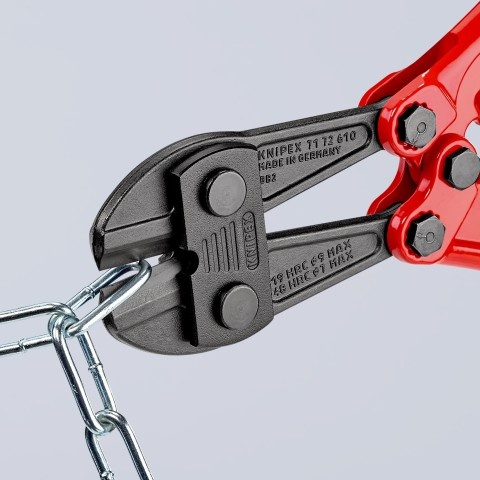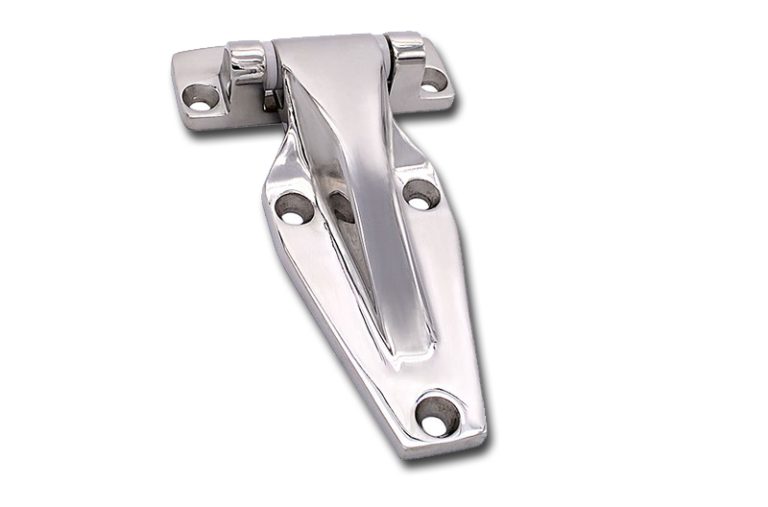How to Remove Concrete Anchors: The Complete Guide
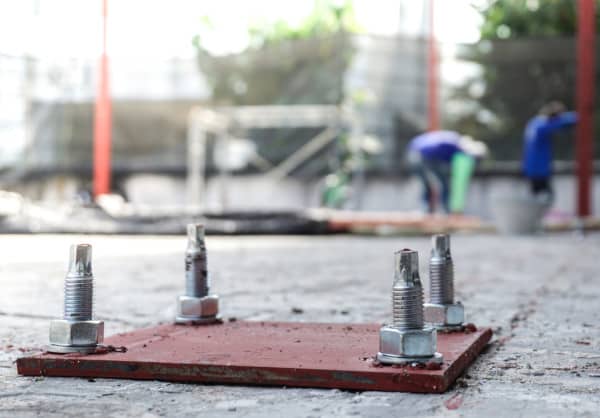
#153 – How to Remove Concrete Anchors: The Complete Guide
While some tried-and-true methods are still needed for removing concrete anchors, a new product vastly reduces the effort in many types – and breaks them off clean
Contractors of all kinds rely on concrete anchors to provide secure and permanent placement for large motors, pipes, structural framing, and a whole lot more. But when those anchors need to be removed, as they often do, the process can often be difficult and labor-intensive. And even then, they often don’t come off completely.
In this article, we explain how to remove concrete anchors, discussing anchors’ characteristics, the tools available for removal, and how removal approaches vary for different types of anchors.
Designed to permanently embed underground, concrete anchors fall into one of two broad categories
Concrete and masonry fasteners consist of a mixture of bolts, sleeves, screws, and other components designed to set permanently in concrete, brick, and other hard materials. Sometimes, this secure fit is provided by components that expand as the bolt is drilled or threaded into the concrete. Other anchors are held in place by powerful adhesives. While the amount of force these fasteners can withstand varies with their type, construction, and the characteristics of the concrete, all concrete anchors are designed to stay in place even when placed under a great deal of stress, making them difficult to remove.
Masonry workers categorize these fasteners as either male anchors or female anchors:
- Female concrete anchors consist of an expanding sleeve or tube with female threads. Installers place this female-threaded component into a pre-drilled hole. Then, they force the expanding tube to widen within the hole. Some lock in place only with the use of a specialized setting tool, while others simply expand when joined with a male-threaded bolt, screw, or rod.
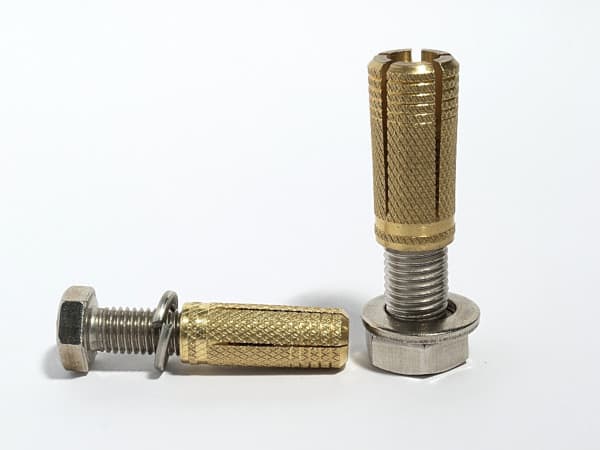
• Male concrete anchors combine the anchoring component and the fastening rod, bolt, or pin into a single unit. Hammering the pin in or tightening a nut over the threaded rod causes the anchor to expand and lock in place.
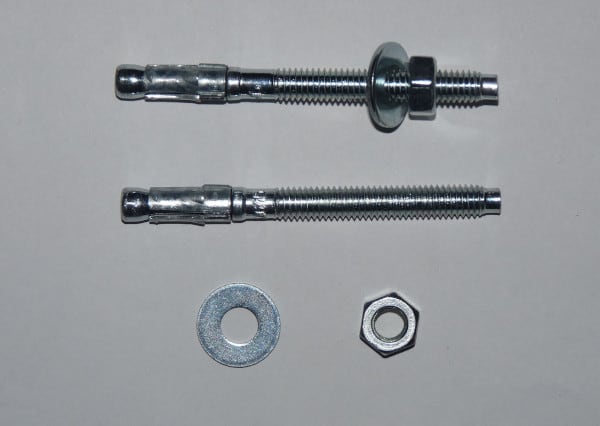
Most female concrete anchors can be removed with simple tools, but male anchors can prove troublesome
From renovation to electrical work, a wide variety of projects sometimes entail the removal of anchor bolts. Warehouses, for example, often need to relocate pallet racks – secured by either wedge or strike anchors – to make the most of inventory space.

But very few concrete anchors can be completely removed without damaging the concrete. Instead, anchor bolt removal usually entails leaving some part of the anchor embedded in the surface, while the above-surface part of the anchor – be that a bolt, threaded rod, pinhead, or part of the anchor itself – is cut off or pulled out. By applying a concrete-patching solution, the remaining part of the anchor and the hole can be covered, leaving a flush surface.
Female concrete anchors are generally simpler to remove. Usually, a screwdriver, pipe wrench, or vise grips can unthread the protruding bolt, leaving the female anchor flush with the concrete. If needed, a hammer can be used to knock the anchoring tube below the floor, and in some cases these tubes can simply be pulled out of the hole entirely.
Male concrete anchors can be much more difficult to remove. If the hole beneath the anchor is deep enough, some anchors can simply be pounded into the ground. Others must be split with a hacksaw or cut-off wheel, leaving an above-ground nub. Generally, that nub can be flattened with a hammer, although some larger nubs may need to be leveled with a grinding wheel. Of course, this all requires a lot of effort.
These methods can work well for removing anchor bolts a few at a time, but contractors looking to remove tens or hundreds of bolts quickly find these methods way too slow and frustrating. And in some facilities, a hot work permit may be required due to the sparks generated by angle grinders or hacksaws, making a time-consuming task even more of a hassle.
Oregon-based Product Design Specialties has developed an effective, easy-to-use anchor bolt removal tool
In response to the shortcomings of traditional anchor bolt removal methods, Product Design Specialties, an Oregon-based manufacturer of ergonomic tools and hazard mitigation equipment, began developing a simple anchor bolt removal tool. Patrick O’Banion, Product Design Specialties’ founder, describes their origin:
“I first made this thing probably seven years ago. And the first one I made, I didn’t have the right equipment – it was expensive. So, I made it, and it worked well, but then I just hung it on my wall for probably about three or four years. Well, one of my other customers came over and asked if I had anything that could break off anchor bolts. He says ‘Man, we’ve got 500 of them that we need to break off. It’s gonna’ take us a week.’ So, I loaned it to him. Well, the next day by noon, they called me up and said ‘Hey, Pat. We’ll take two of them. And this other company’s needs two of them. How fast can you get them made?’”
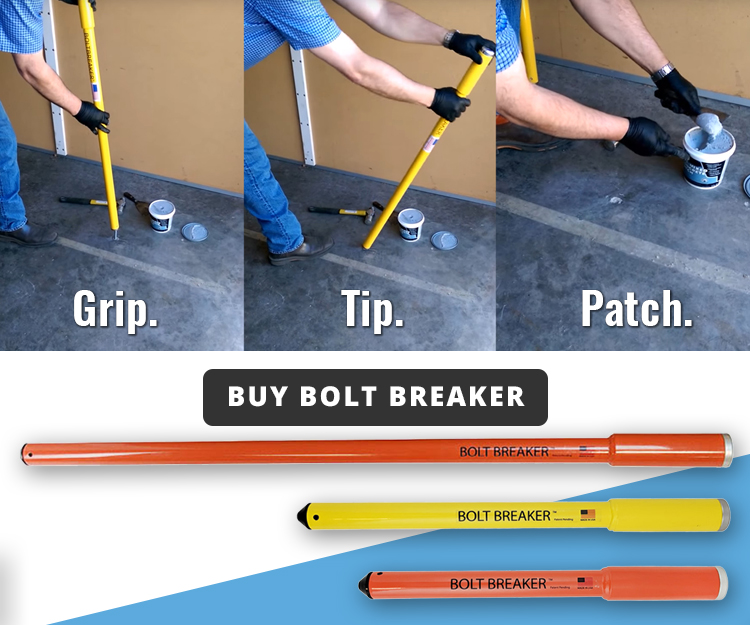
Soon after, Product Design Specialties secured the equipment needed to produce this new product – the Boltbreaker – at a much lower cost, quickly earning the business of a wide variety of contractors.
Boltbreaker provides one the simplest, safest, and quickest methods on the market for breaking off threaded rod. If something sticks out of concrete – whether it’s part of a concrete anchor or not – it can be cut and prepped for concrete patch in a fraction of the time used by other methods.
By sliding the Boltbreaker over a protruding bolt, rocking it back and forth once, and rotating in a circular motion, this device heats and weakens the molecules inside the bolt, causing it to snap off – cleanly. In fact, harder bolts, such as SAE Grade 8 carbon-alloy steel bolts, break off even more cleanly than lower-grade bolts.
Using carbon-steel tips designed to match the diameter of each anchor bolt – including 1/4″, 3/8″ 1/2″, 5/8″, and 3/4″ sizes – it removes concrete anchors at or below floor level, leaving the floor ready for concrete patching. Boltbreaker can remove everything from short nubs protruding above a nut to full-sized rods in excess of 20″ long. It requires no electricity, generates no dust, and produces no sparks, eliminating the need for hot work permits, as shown in the video below:
How to remove male concrete anchors by anchor type
If you want to remove most concrete anchors quickly and easily, buy a Boltbreaker. If you only have a few to remove and you want to do it the old-fashioned way – or it’s a type of bolt that requires a different process – let’s look at the methods of getting rid of these common male concrete anchors:
- Wedge Anchors
- Strike Anchors
- Sleeve Anchors
- Split Drive Anchors
- Hammer Drive Anchors
Removing wedge anchors
The wedge anchor has a small expanding sleeve attached to one end of the anchor. Designed for use in solid concrete, they are widely used to secure light posts, ductwork, and pallet racks.
Wedge anchors can be removed from concrete in one of three ways:
- If the hole beneath the anchor is deep enough, simply pound it into the concrete with a hammer
- Use a saw or grinding wheel to cut the anchor off just above the surface, and pound the rest flat with a hammer
- Or you can simply place the Boltbreaker over the protruding rod, rock back and forth, and rotate until the rod breaks off
Removing sleeve anchors and strike anchors
Strike anchors feature an expanding body with a threaded top and a pin used to expand the anchor in the concrete hole. Sleeve anchors, used with concrete, brick, or block, use a threaded rod, a nut, and an expanding sleeve to secure to concrete.
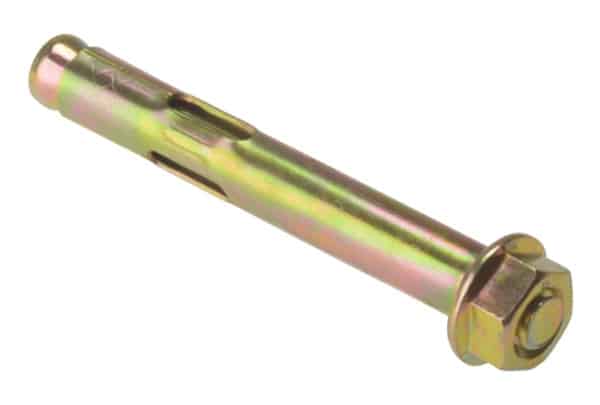
Like other male anchors, sleeve anchors and strike anchors can’t be fully removed, although some sleeve anchors can simply be tapped below the surface of the concrete after removing the nut and washer. But the threaded rod protruding from a sleeve or strike anchor can be removed and patched by following these steps:
- Remove the nut and washer from the anchor.
- If the hole beneath the anchor is deep enough, simply pound it into the concrete with a hammer.
- Cut off the threaded, above-ground section of the anchor. If you have a Boltbreaker, slide it over the protrusion, rock back and forth once, and rotate until the bolt snaps off below the surface. Alternatively, cut through the bolt with a hacksaw or grinding wheel.
- If necessary, make the remaining nub flush with the surrounding concrete. Sleeve anchors can often be knocked deeper into the ground with a hammer. Hammer or grind any protruding rod as necessary.
Removing split drive anchors and hammer drive anchors
Hammer drive anchors feature a pin and sleeve designed for insertion in a pre-drilled hole. Hammering in the pin causes the sleeve to expand, trapping the anchor in the hole. The split drive anchor is a single-piece anchor with two pre-expanded halves that compress and then re-expand when hammered into a hole.
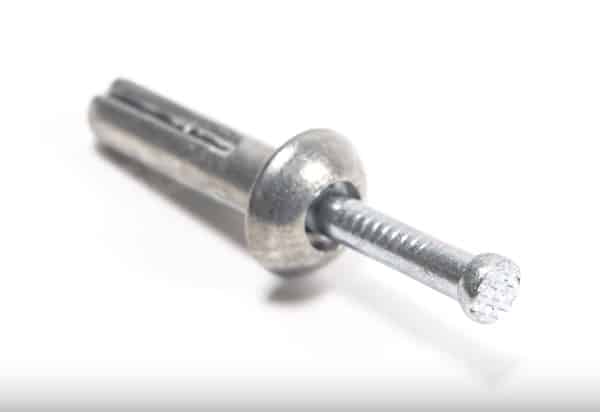
When installed, these anchors leave only a flat head at the surface. Extraction methods for these hard-to-remove fasteners vary, but recommendations for removing hammer drive anchors and split-drive anchors include:
- Pulling out the anchor with a flat prybar and hammer
- Removing the head with a grinder, then flattening the protruding anchor
- Chiseling under the head and pulling out the anchor
How to remove female concrete anchors by anchor type
While all female concrete anchors can easily be made flush with the surrounding concrete, most have an anchoring component that remains permanently embedded.
Machine screw anchors and drop-in anchors feature an expanding plug that locks in place using a specialized setting tool. Because the entire anchor sits below the surface, any bolts or threaded rods connected to them can simply be unthreaded and the anchor hole patched over. Neither a machine screw anchor nor a drop-in anchor can be removed without damaging the concrete.
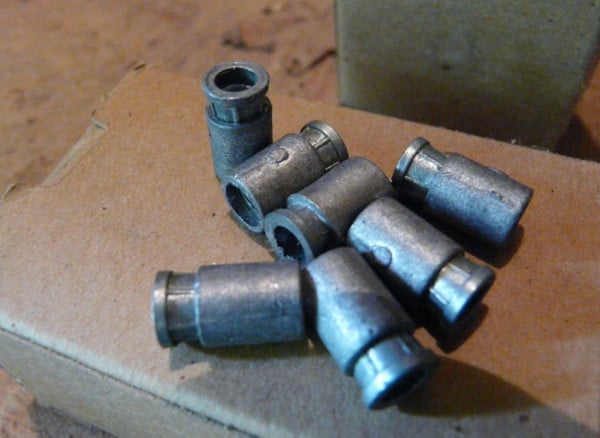
Lag shield concrete anchors use a bolt and sleeve that insert in a hole. As the bolt threads into the lag shield, it expands, fastening it to the concrete. Lag shield concrete anchors may be the easiest anchor to remove: as the bolt is removed, the anchor may contract, allowing it to be pulled from the hole.
Specialty anchor bolt removal tools now available at QRFS
If you’re looking for a faster way to remove wedge anchors, sleeve anchors, or strike anchors from concrete, Product Design Specialties’ line of anchor bolt removal tools are now in stock at QRFS.
Available with an orange or yellow finish, each Boltbreaker includes two interchangeable carbon steel tips designed to cleanly break off 3/8″ or 1/2″ anchor bolts, metal rods, or rebar embedded in concrete. Tips for 1/4″, 5/8″, and 3/4″ bolts are available by special order.
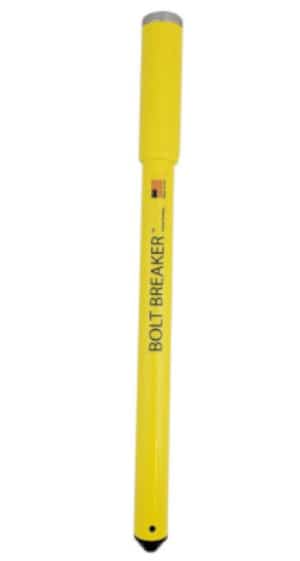
Boltbreaker can break off low-carbon, medium carbon, and medium carbon alloy steel bolts or rod, and it is available in three sizes:
- Long (40″) for maximum leverage
- Standard (25″) for a blend of leverage and portability
- Mini (20″) for confined or otherwise compact spaces
Click here to view our selection of Boltbreakers.
Questions about how to remove concrete anchor bolts? Want to order a Boltbreaker with non-standard carbon-steel tips? Call us at +1 (888) 361-6662 or email support@qrfs.com.
This blog was originally posted at blog.qrfs.com. If this article helped you find a solution, check us out at Facebook.com/QuickResponseFireSupply or on Twitter @QuickResponseFS.


